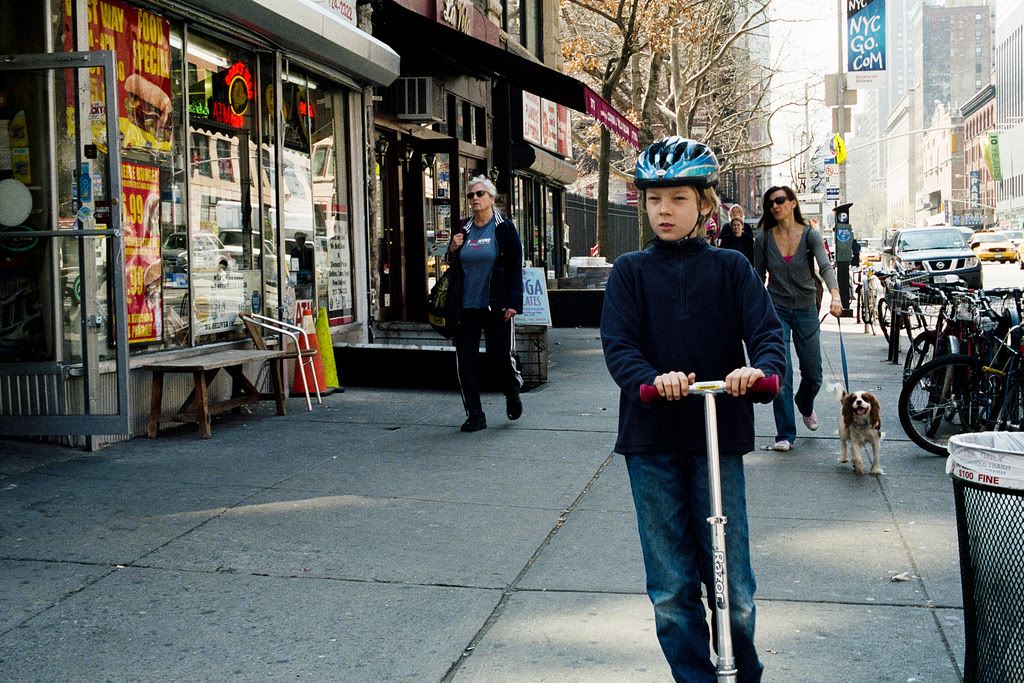mafoofan
Established
Well, I've taken my first bunch of photos with my new MP. I'd really appreciate any input or advice any of you might have as I try to learn the ropes.
I'm using a Summilux 50 ASPH and shooting on Portra 400. I had the negatives developed at LTI in New York City and scanned them myself on a Nikon 5000ED. I used Vuescan, and scanned without any adjustments--linear, no color balancing, no sharpening, saved to RAW/DNG, etc. I set the scanner to 4000dpi, single sample, with multi-exposure, and manually set the focusing on each frame. I found that multi-sampling did not improve the images, and actually made them worse in some cases.
I used Lightroom 4 to process the DNG files from Vuescan. For each photo, I adjusted only two settings: the tone curve and white balance. I adjust the white balance first, eyeballing the histogram and checking against the image. Then I play with the curve, generally aiming to maximize contrast without clipping the tonal range.
I am not applying any sharpening, as it doesn't seem to do any good and Portra 400 seems to scan plenty sharp enough.
Here are some of my first photos:
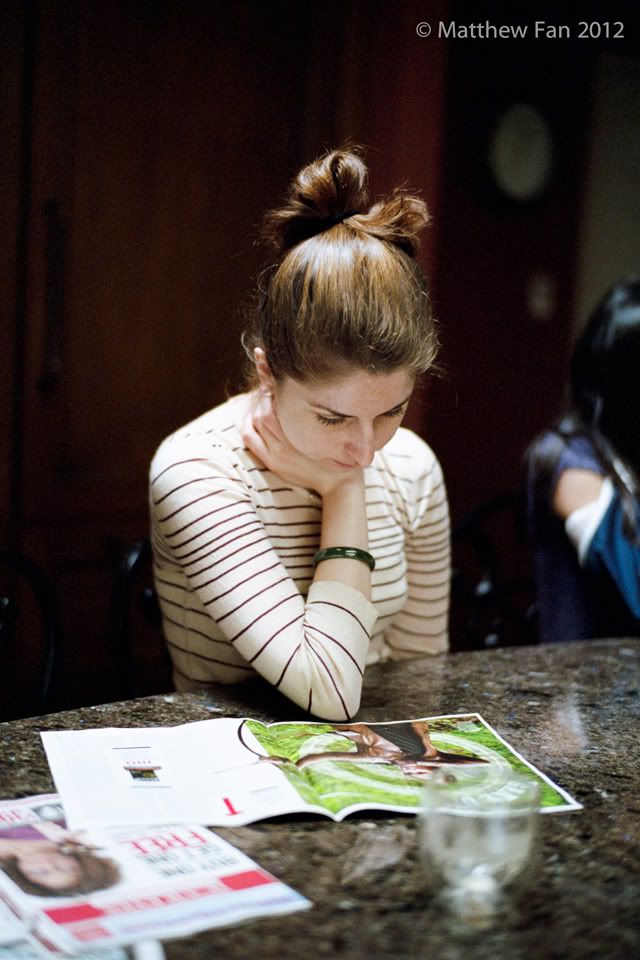
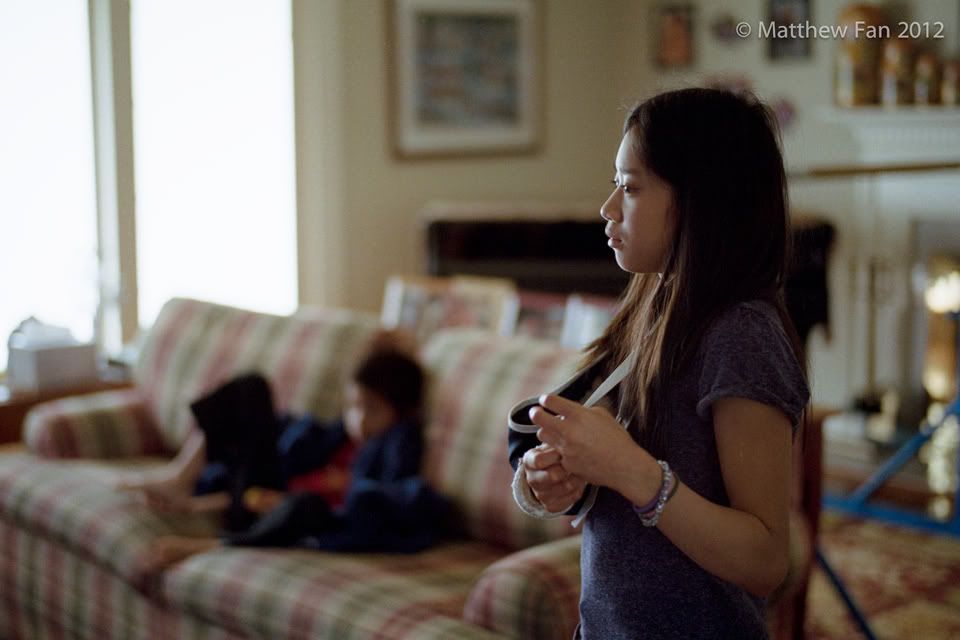
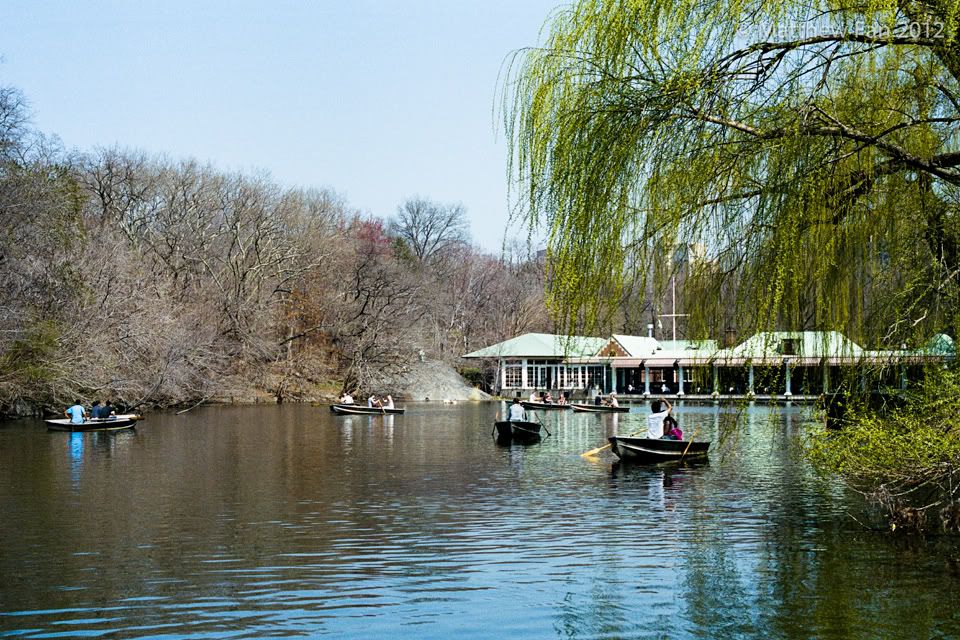
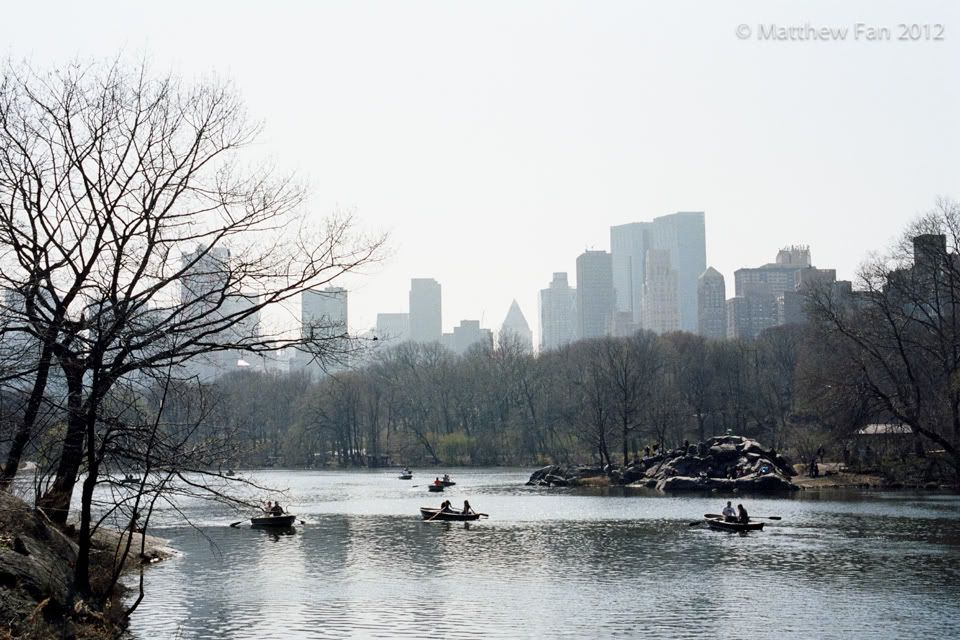

I'm mainly look for feedback regarding technique (focusing, exposure, digital processing, etc.), but thoughts on composition and artistic taste are also welcome! Thanks!
I'm using a Summilux 50 ASPH and shooting on Portra 400. I had the negatives developed at LTI in New York City and scanned them myself on a Nikon 5000ED. I used Vuescan, and scanned without any adjustments--linear, no color balancing, no sharpening, saved to RAW/DNG, etc. I set the scanner to 4000dpi, single sample, with multi-exposure, and manually set the focusing on each frame. I found that multi-sampling did not improve the images, and actually made them worse in some cases.
I used Lightroom 4 to process the DNG files from Vuescan. For each photo, I adjusted only two settings: the tone curve and white balance. I adjust the white balance first, eyeballing the histogram and checking against the image. Then I play with the curve, generally aiming to maximize contrast without clipping the tonal range.
I am not applying any sharpening, as it doesn't seem to do any good and Portra 400 seems to scan plenty sharp enough.
Here are some of my first photos:





I'm mainly look for feedback regarding technique (focusing, exposure, digital processing, etc.), but thoughts on composition and artistic taste are also welcome! Thanks!


